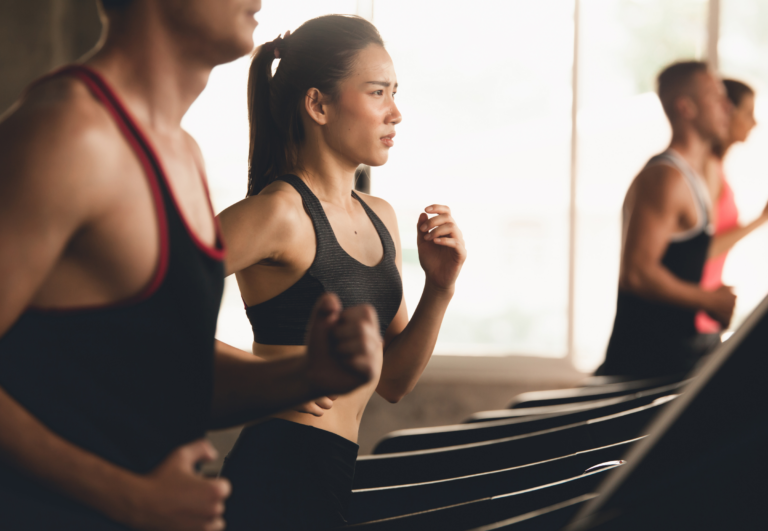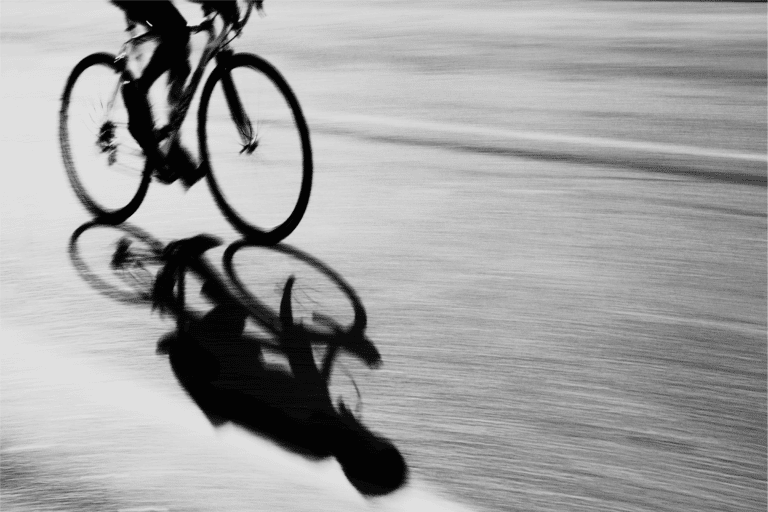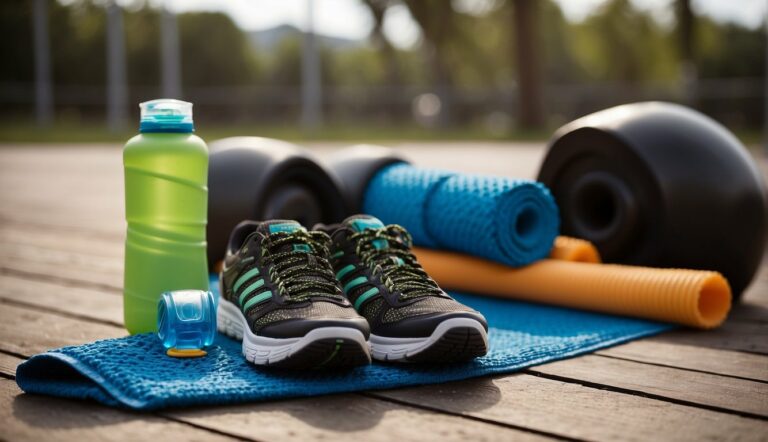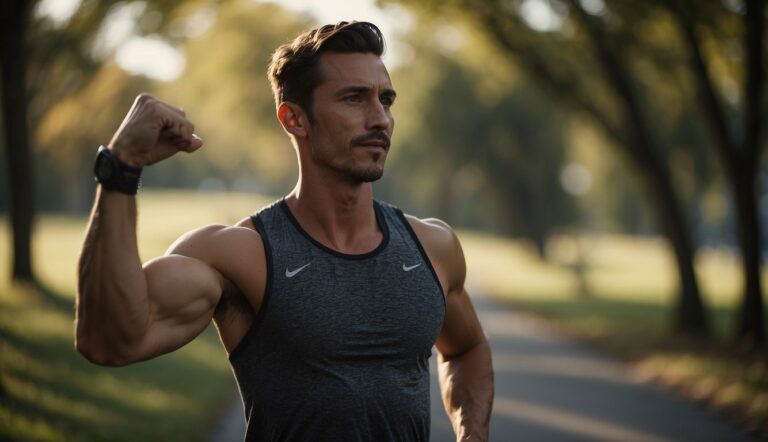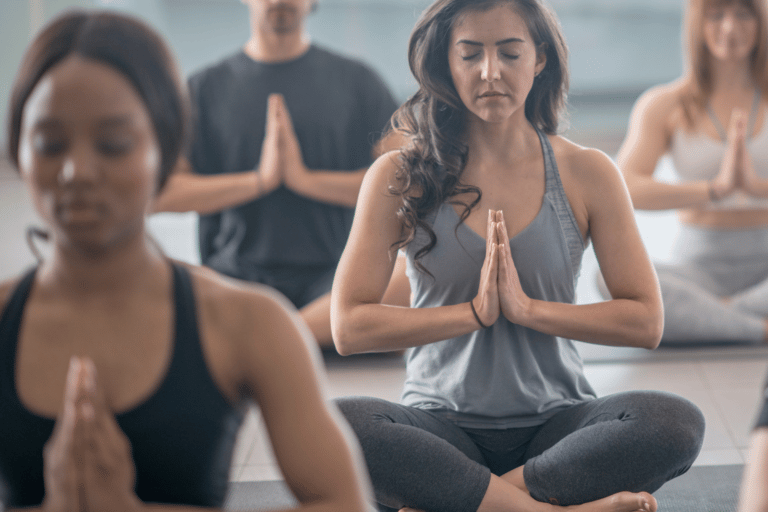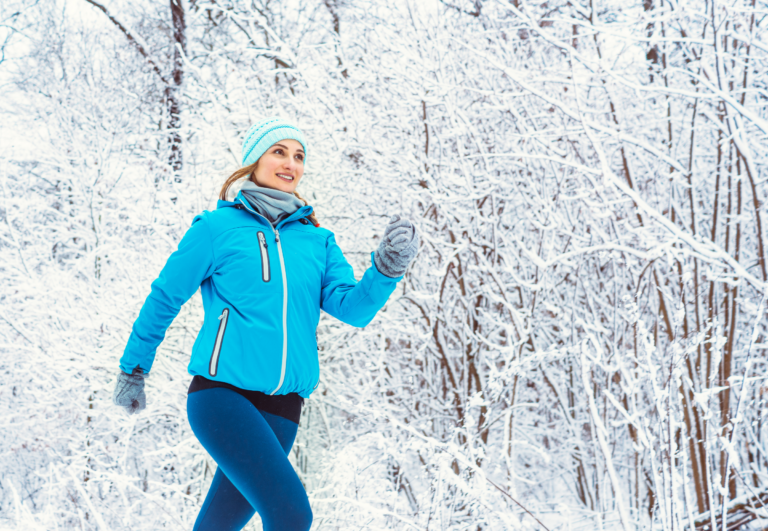Should Runners Wear Sunscreen? (With Essential Skin Protection Tips)
Runners usually spend a lot of time outside in the sun and, as a result, put themselves at risk of sun-related issues. Should runners wear sunscreen? Are there better ways to protect your skin? Let’s dive in.
Runners should wear sunscreen because it minimizes the risk of sunburn and skin cancer. Choose a sweat-resistant sunscreen and apply it to all exposed skin – typically your face, neck, arms, and legs – and reapply every 30 minutes to maximize effectiveness. Runners should also use lip balm, sunglasses, hats, long shirts, and pants to protect their skin from the sun.
Read on to learn why sunscreen is a must-have for runners, the most common issues with sun exposure, and how to best combat those issues. Stick around to the end for our favorite performance sunscreen for runners!
Is it important for runners to use sunscreen while running?
Typical running gear is thought of as running shoes, a water bottle, and maybe a heart rate watch to help keep you in check. However, runners should expand their definition of what is important to have when running.
Sunscreen is extremely important for runners to use when running in the sun. When applied properly and reapplied often, sunscreen reduces the risk of developing skin cancer and saves runners from the excruciating pain of a severe sunburn.
Prolonged sun exposure is detrimental to a runner’s health. Spending too much time running in the sun will increase the long-term risk of developing skin cancer if precautions are not adopted.
Skin cancer is the most common cancer in the United States; every 1 in 5 Americans will develop skin cancer by age 70. That’s a whopping 20 percent! When caught early, it isn’t usually fatal. However, skin cancer often goes undetected. The estimated annual death toll from melanoma (a form of skin cancer) is 60,000 people.
Knowing this statistic may encourage runners to make wiser decisions before deciding to run in the middle of the day when the UV rays are the strongest.
Apart from skin cancer, sunburns are the immediate risk of sun exposure. And boy, are they painful. Sunburns result from blood cells rushing to the skin’s surface to aid in its repair. This gives the skin its inflamed feeling and blotchy red look.
Not only are they painful but they increase the risk of skin cancer too. One severe sunburn increases risk of melanoma development by 50 percent!
Use preventative measures outside of sunblock: wear long sleeve shirts and pants, avoid running in the middle of the day, wear a wide-brim hat for maximum sun protection, etc.
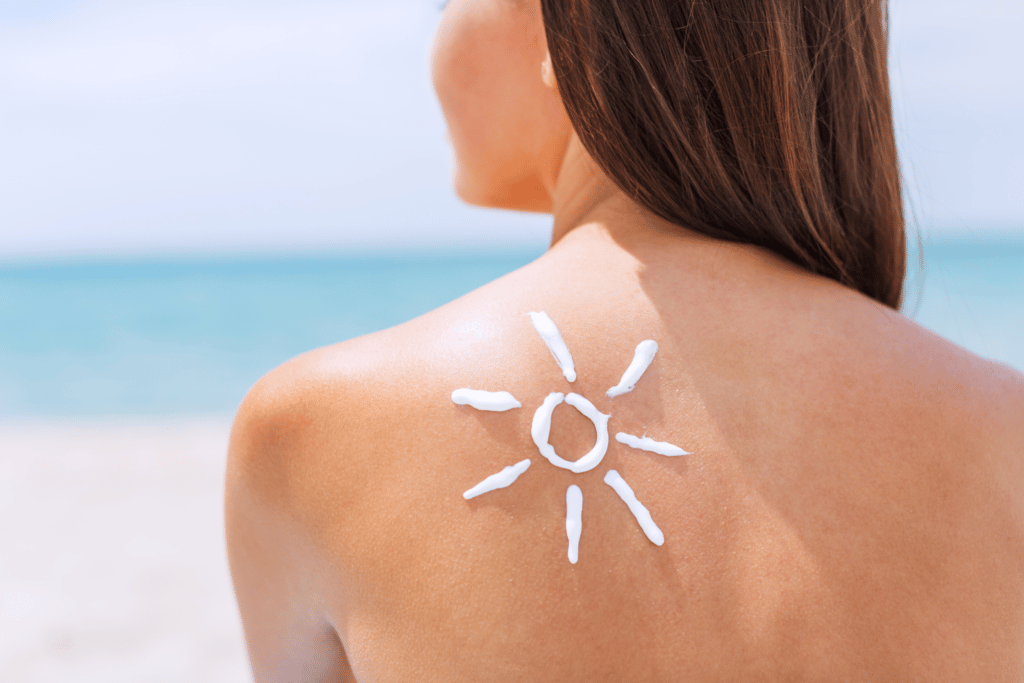
Do pro athletes wear sunscreen?
While we idolize many professional athletes, we’re all human at the end of the day. Athletes are exposed to the same risk, if not more risk, of sun exposure and skin cancer. Do pro athletes wear sunscreen to combat this risk?
Professional athletes wear sunscreen to minimize the risk of skin cancer and sunburn. Since they may actually be at a higher risk of skin cancer than the general population due to the frequency of training in the sun, it is important they use sun protection.
Professional athletes devote their lives to their sports, constantly training. This means they spend much more time in the sun than a recreational runner. Athletes reportedly exceed the recommended UV exposure by up to 8 times. It’s crucial for them to wear sunscreen to neutralize that increased risk effectively.
Take it from Kahale Warring, an NFL tight end. When asked in an interview, he said, “Sun protection is important to consider as an athlete…we don’t want to get sunburnt or have heat exhaustion from the sun.”
What about morning runs or evening runs?
Sunburn risk is at its highest in the middle of the day. Running in the morning or later in the evening is great for avoiding high UV radiation, but should I wear sunscreen at night?
When running in the morning or the evening, be sure to use sunscreen. While the risk of sun exposure is lessened, it is still present. It may not be necessary to reapply as often or wear as strong of sunscreen but apply liberally to be safe.
Looking at the UV index scale provides all the data we need:
- In the morning, once the sun has come up, the UV index can be anywhere from a rating of 3 to 7; this indicates moderate to high risk.
- Mid-day, from around 10 a.m. to 4 p.m., the rating can be 8 or above. This indicates extremely high risk. If possible, avoid running at this time.
- After the sun begins to set, the UV index will decline, but there is still a moderate risk of damaging the skin.
Be cautious and wear sunscreen regardless of the time of day; the risk is always there!
6 most common sun-related issues for runners
The last thing runners want to worry about when they go out for a run is the unintended consequences of sun exposure. UV radiation from the sun poses serious risks and should be dealt with accordingly.
Spending too much time in the sun has short and long-term consequences. Even if you can duck the short-term consequences like a sunburn or chapped lips, the long-term consequences can be fatal.
The most common sun-related issues for runners are:
- Sunburn
- Chapped Lips
- Runner’s face
- Sun spots
- Skin cancer
- Eye damage
Let’s dive deeper into each issue and why it’s so important to practice prevention.
Sunburn
I’ve endured many more sunburns than I would care to admit from going on runs! Simply put, it’s not a fun experience.
Running in the sun is likely to result in sunburns, especially for runners with fair skin. It’s important to take the necessary precautions and wear sunblock or protective clothing to prevent severe skin trauma.
Sunburns are the result of excessive exposure to UV light from the sun. When UV rays damage the superficial skin cells, blood flows to the affected skin.
The new blood flow is what causes inflammation in the skin; this is why sunburns can be so painful. The skin is super inflamed! It also explains why sunburnt skin gets that lobster-red shading.
Sunburns are often underestimated; they can happen even when it’s cold or cloudy outside. While it may take longer, the risk is not entirely neutralized.
Over time, sunburns are not only painful but harmful. Getting sunburnt drastically increases your risk of developing skin cancer. In fact, five or more sunburns more than doubles your risk of developing melanoma.
Be careful in the sun and follow the preventative measures explained below to avoid excessive risk!
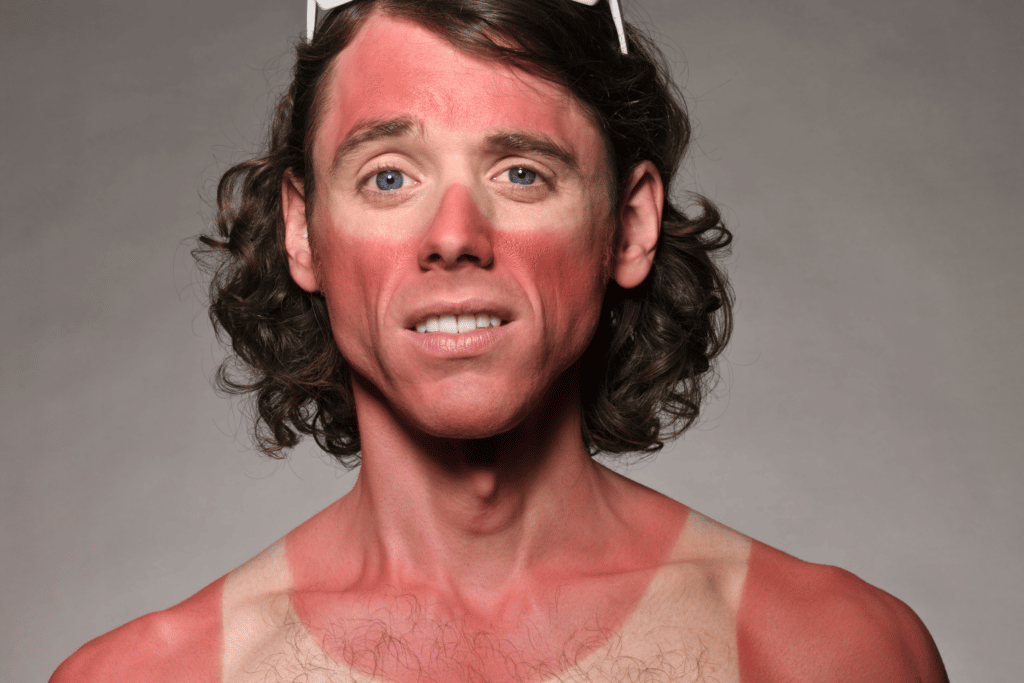
Chapped lips
Known in medical terms as actinic cheilitis, chapped lips are a very real risk of spending time running in the sun. Too much sun and not enough protection can dry out the lips and crack the skin on the surface.
Running in the sun commonly results in chapped lips. Symptoms include dryness, cracking, and sometimes lesions on and around the lips. Chapped lips can be avoided by wearing an SPF-grade lip balm.
Chronic sun exposure is one of the root causes of chapped lips. Similar to sunburns, too much UV exposure can wear down the top layer of the lips known as the mucosal epithelium.
90% of chapped lips from running occur on the bottom lip, and usually present as dryness, cracked skin, and papules or plaques on the lips.
Unfortunately, chapped lips from sun exposure are a premalignant condition. This means that having chapped lips predisposes runners to developing dangerous forms of cancer in the future.
To avoid chapped lips, apply SPF-grade lip balm liberally to your lips.
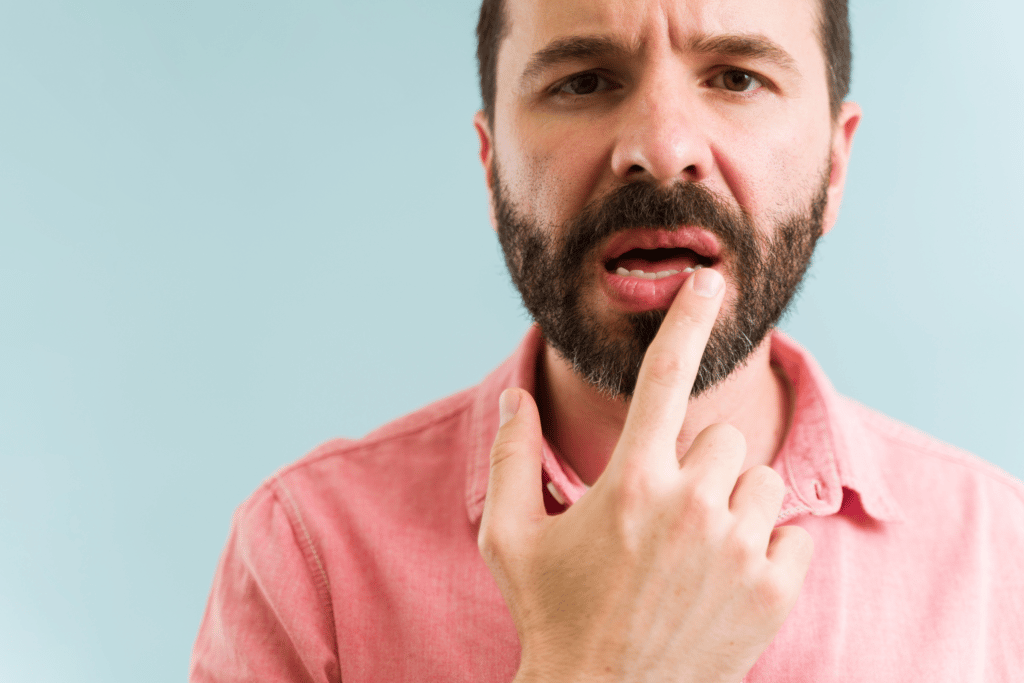
Runner’s face
Runner’s face is associated with saggy facial skin developing over time and is so-called because runners show this trait more often than non-runners do. Why is that?
Runner’s face results from excessive sun exposure. The fragile facial skin is broken down by harmful rays from the sun, damaging its elastic properties in the process. This leads to saggy facial skin and an aged look that is less than preferable.
The cause of runner’s face has long been debated. Is it from low body fat? Or from the constant jostling of the skin on your face?
It’s much simpler, actually – the answer is sun exposure. Just as the sun does to every other part of the body, it breaks down the component of the skin that makes it stretchy.
UV radiation causes collagen and elastin, two key components to skin longevity, to break down from sustained trauma.
Without strong, elastic skin, our skin takes on the saggy look associated with runner’s face. So, while it’s called runner’s face, it doesn’t come from running; it comes from sun exposure incurred while running.
Sunspots
Commonly known as age spots, sunspots are spots on the skin caused by long-term sun exposure. They are not typically dangerous, but they must be watched because there is always a slim chance that a sunspot is a sign of developing skin cancer.
Spending time running in the sun can cause sunspots, commonly known as age spots. Prolonged exposure increases melanin production in spots and leads to darker skin pigmentation.
Sunspots don’t look appealing, but on top of that, they must be carefully watched for signs of cancer.
A stagnant sunspot, or one that is not changing in size or color, is typically not dangerous.
However, if a sunspot changes in color or size, it’s important to get it checked immediately! Changing spots can indicate rapid cell growth, a sign of possible melanoma.
As always, prevent sunspots by wearing and reapplying sunscreen in tandem with protective clothing. Prevention is the best cure!
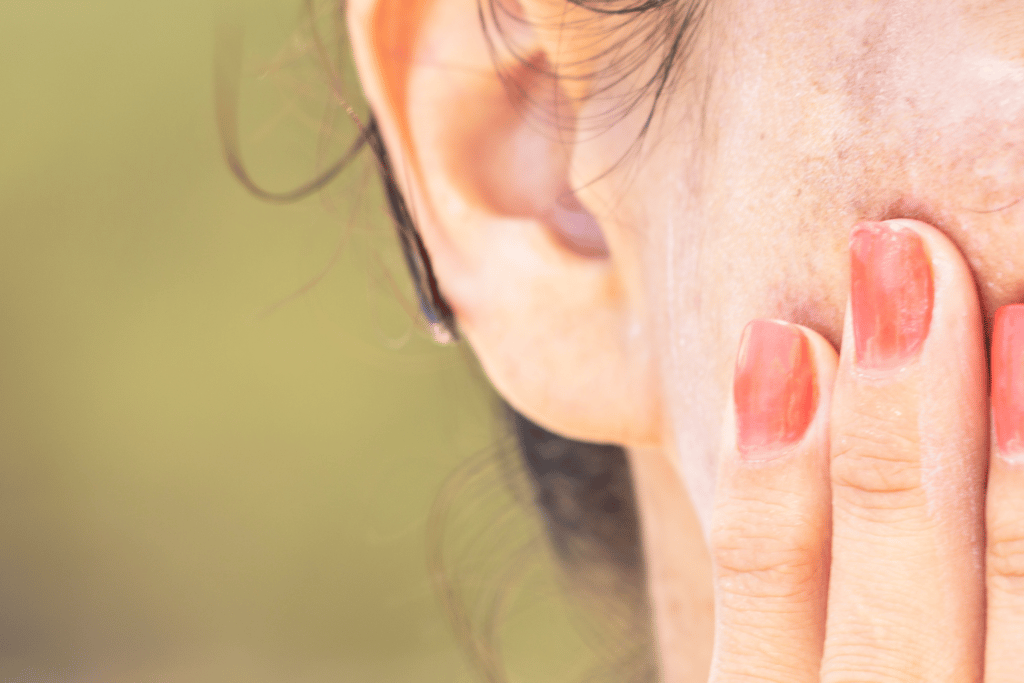
Skin cancer
The United States’ most common cancer is none other than skin cancer. For runners, the situation is no different. Skin cancer poses a serious threat to your health and your longevity.
Skin cancer is a considerable risk of running in the sun. Spending time in the sun exponentially increases your chance of developing melanoma, a deadly form of skin cancer. Skin cancer should not be taken lightly as it often goes undetected and progresses to irreversible stages of damage.
According to the Cleveland Clinic, UV radiation from the sun is the number one cause of skin cancer. It’s not to be taken lightly.
Skin cancer victims are often thought of as pale-skinned, light-eyed individuals. While it is true that these individuals are at greater risk, everyone is at risk for skin cancer.
I cannot emphasize enough the importance of being responsible in the sun. Wear sunblock, protective clothing, and try to avoid running during the middle of the day when UV rays are the strongest.
If prevention doesn’t work, catching skin cancer early is crucial. Small changes on the skin in the form of a new or changing mole often indicate early-stage skin cancer.
The statistics surrounding skin cancer are alarming. Twenty percent of Americans will develop skin cancer during their lifetime, and 2 Americans die from skin cancer every hour.
Please, please, please take sun exposure seriously. It can be a matter of life or death.
Eye damage
Eye damage is not often associated with sun exposure; maybe some wrinkles but nothing of actual risk. However, there is a correlation between prolonged sun exposure and vision troubles.
Spending time in the sun running can expedite cataracts in many individuals. UV rays from the sun increase oxidative stress, leading to the clumping of proteins inside the eyes. These clumped proteins cloud the lens and subsequently cause cataracts.
Running in the sun is more than just possible skin troubles. You must consider the potential risks for your eyesight as well.
UV light from the sun damages the proteins in your eye lens, leading to clumping. This process is called glycation and you can read more about it on the National Eye Institute’s website.
Excessive clumping from glycation blurs vision and causes cataracts.
Luckily, sunglasses are a great preventative measure for warding off early cataracts. By wearing sunglasses, you can shield your eye from harsh UV rays and prevent excessive squinting, which will also decrease wrinkles around the eyes. Two for one!
How to protect your skin from the sun while running
The potential risk incurred by running in the sun is astronomically high! Getting burnt only a few times greatly increases the risk of skin cancer, and sunburns are incredibly painful.
The most popular form of prevention is wearing sunscreen, although it’s not the only way to protect yourself from the sun’s harmful rays. Other forms of prevention might be easier; ultimately, the most effective methods are the ones runners will use consistently.
To avoid issues like skin cancer and severe sunburns, it’s best to practice preventative measures, including:
- Sunscreen
- Lip balm
- Hats or visors
- Sunglasses
- Long sleeves
- Long pants
- Check the UV index
Read on to learn about the different protection methods and discover which is best suited.
Sunscreen
Sunscreen is awesome for preventing sunburns and protecting the vitality of your skin. It’s a real game-changer!
Sunscreen is a great protective measure against the sun when running because it deflects UV rays from the skin and keeps the skin moisturized while doing so. Sunscreen also effectively prevents the three most common forms of skin cancer.
Sunscreen works in two ways: it deflects or absorbs UV rays. Whether sunscreen deflects or absorbs depends upon the ingredients used.
Using sunscreen when experiencing prolonged sun exposure from running or other activities has been shown to reduce risk of both melanoma and nonmelanoma skin cancers.
Sunscreen also prevents sunburns. In turn, this lowers the long-term risk of skin cancer development and saves you from a lot of unnecessary pain.
Of course, it’s important that sunscreen is used correctly. If not used correctly, it will be less effective.
What to look for in a sunscreen
Applying sunscreen at the right time is crucial for it to work effectively.
Apply sunscreen before running and periodically throughout a run for full coverage and prevention.
Chemical sunscreens, which absorb sunlight, must be applied 20 minutes before sun exposure. This small buffer allows your skin to soak in the chemicals before being exposed to UV rays.
Once you’re out running, reapply liberally every 30 minutes to exposed sites. This may seem like overkill, but studies have proven it to be effective in combating sweat and other grime that reduces sunscreen’s success rate.
What kind of sunscreen do marathoners use?
Just as important as proper application is the type of sunscreen runners use. With all the sweating we do as runners, having high-quality sweat-resistant sunscreen is a must.
Marathoners use long-lasting, sweat-resistant sunscreens designed for sports usage. Sunscreen used by marathoners is also often of higher SPF (sun protection factor) to account for the prolonged amount of time spent in the sun.
The best sunscreen for marathoners is one with a high SPF and that is sweat-resistant.
The higher the SPF, the better. SPF 15 protects 93% of UV rays, whereas SPF 50 protects 98% of rays.
Sweat resistance is also crucial because, as runners, we sweat bullets. Marathoners experience this to an even worse degree as their body temperature slowly peaks over hours of running.
Lip Balm
Your lips are at just as high a risk as your skin for long-term sun damage; they should be treated accordingly.
Apply chapstick with SPF prior to going for a run to protect the lips from extensive sun damage.
The skin on your lips is extremely fragile when compared to other skin on your body. Considering that the lips have only 3 or 4 layers of skin when the norm for other body parts is 15 or 16 layers, it makes sense.
Because the lips are thin and extremely fragile, they are at higher risk for damage from sun exposure. Applying the proper lip balm can help to protect the lips against the sun.
However, be cautious when making your purchase, and be sure to get one with SPF. Regular (aka without SPF) lip balm can actually make the situation worse as the glossy nature of the balm actually attracts UV rays.
Choose a chapstick with high SPF and you’ll be good to go!
Hats or visors
The skin on your ears, face, and neck is notoriously sensitive. Sometimes, slathering up in sunblock isn’t enough. The next step is to add a running hat or a visor into the equation.
Wear a wide-brim hat or a visor when running outside to protect your ears, face, and neck from harsh UV rays. Be careful when wearing a visor as it may leave the top of your head exposed to the sun. For this reason, we recommend a wide-brim hat over all else as they achieve the most coverage.
Sunblock is great for the neck up, but what if I told you there’s an easier, less greasy option? Simply slap a hat on!
In lieu of using sunblock, a hat or a visor is a great option to protect the neck and above from the sun. There are many different options from baseball caps, to wide-brim hats, to visors, and more.
A cap or visor will protect your face from UV rays, but it will leave your ears and the back of your neck exposed to the sun’s wrath. Visors leave the top of your head exposed too!
Wearing a wide-brim hat eliminates all these issues. While they may not be the most fashion-forward choice, wearing a wide-brim hat provides exceptional protection from the sun.
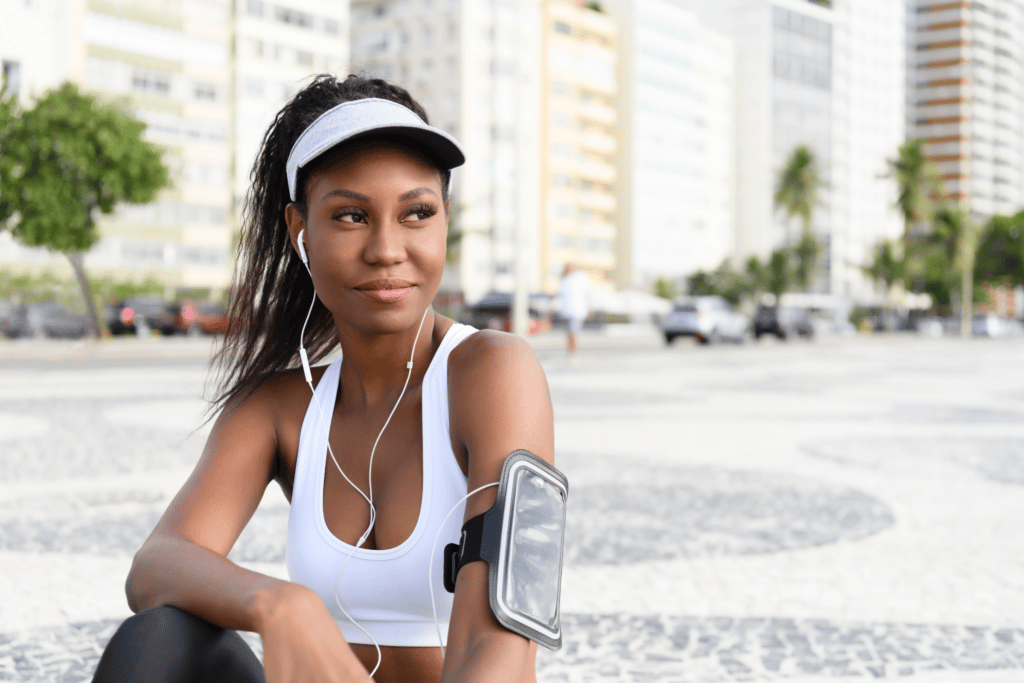
Sunglasses
Aside from being stylish, sunglasses are inherently practical as well. They shade your eyes from the sun and reduce the need to squint when running on a bright, sunny day.
Wearing sunglasses protects the eyes from the sun, which provides two benefits. Sunglasses help to reduce the risk of developing sun-related eye diseases like cataracts while also reducing wrinkles around the eye that result from squinting.
Excessive sun exposure can cause cataracts, a clouding of the eye lens that creates vision problems. By wearing sunglasses, the eyes are effectively protected from the sun’s rays.
The sun takes a serious toll on the eye over a long period of time. As runners who end up spending hours under the sun, we must take care of our eyes by wearing sunglasses.
Running in the sun also tends to make runners squint in an effort to protect their eyes from the bright light. It is involuntary and helps to reduce the amount of light our eyes take in at once. Over time, squinting leads to eye wrinkles. Nobody wants those. Wear your sunglasses to maintain your vision and good looks!
If you’re looking for recommendations, my favorite brand is Goodr. They provide affordable glasses that look and perform great!
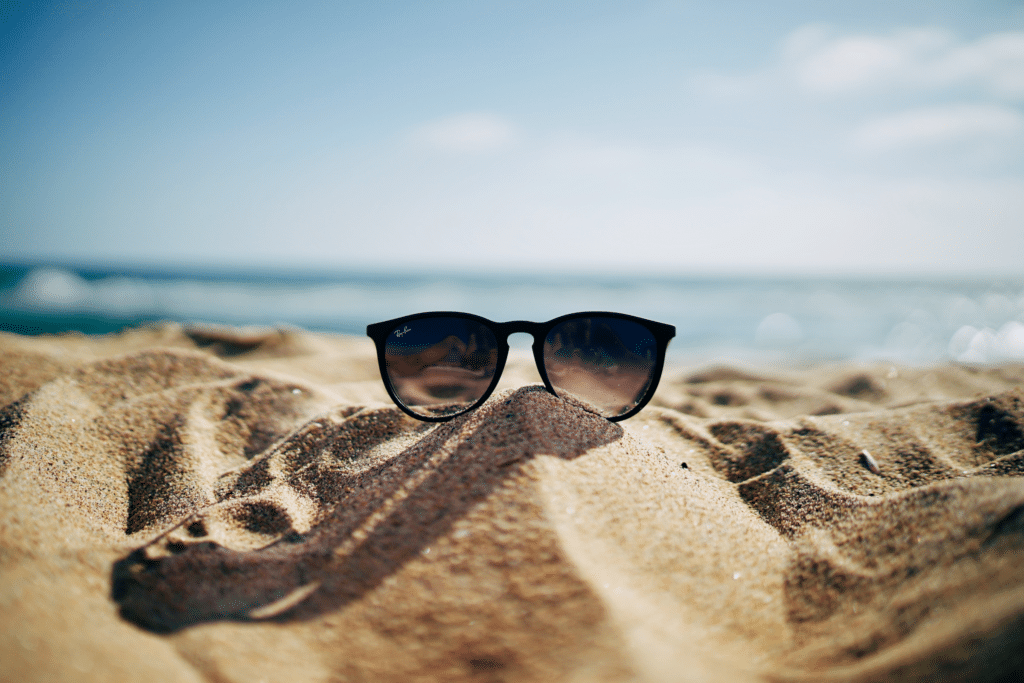
Long sleeves
If you’re anything like me, nothing is more off-putting than the greasy feel of sunblock. Not to mention it doesn’t smell good either!
Luckily, there is a great alternative to having to cover yourself head to toe with sunblock.
Opt for a long sleeve shirt instead of sunblock to protect your upper body from the sun. Many shirts with high SPF ratings also have cooling factors to keep you feeling fresh during your run.
Going for a short run does not pose as much of a problem as a long run. You can put sunblock on once and be sufficiently protected from the sun. Going on longer runs, however, requires constant reapplication.
It’s easier to wear a long sleeve shirt designed for outdoor activity.
Most importantly, long sleeve shirts with SPF factors perform the same function as sunscreen without the hassle of reapplication. Make sure when choosing a shirt that it has a high SPF just as you would when choosing sunscreen.
Long sleeve shirts also keep you cool. This is contrary to popular thought, but many long sleeve shirts that are designed for outdoor activity are made of sweat-wicking materials that will help keep you cool during an intense run.
Lastly, they provide protection from windburn and other random complications. The price tag may be steep, but I promise these shirts are worth the investment.
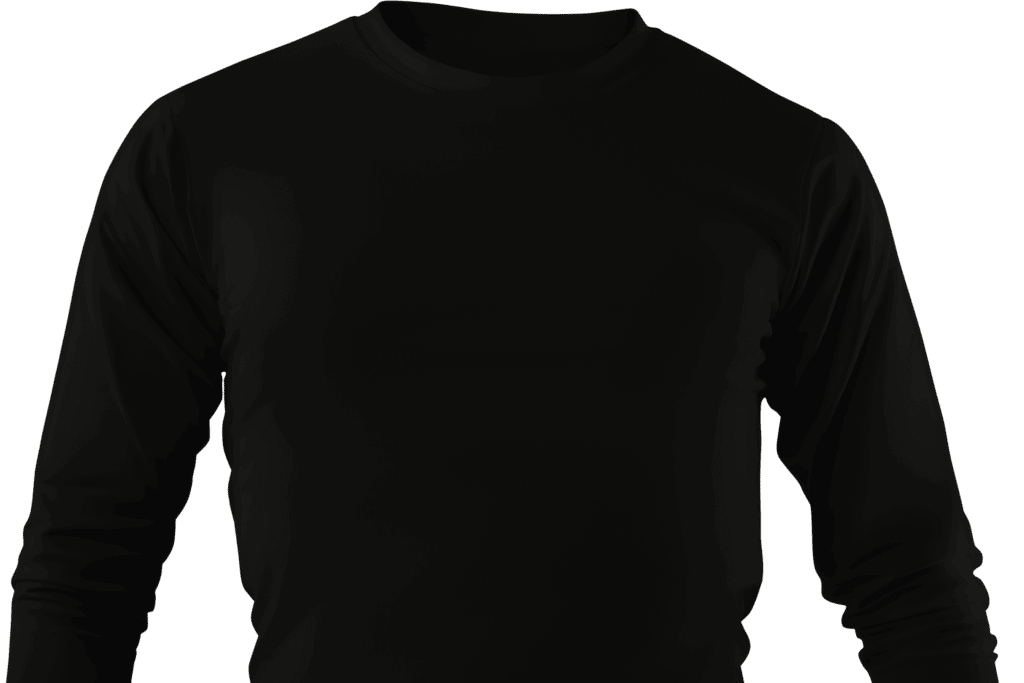
Long pants
Running in pants? In the middle of the day? Yeah, that’s right.
Running in pants is similar to running in a long sleeve shirt in that the added material protects your skin from sun exposure. Pants protect from UV rays and keep runners cool with breathable, dry-fit material.
In some regards, long sleeve shirts and pants are nearly identical. Obviously, one is for your upper body and one is for your lower body, but they serve the same exact purpose.
Just as with long sleeve shirts, purchase pants made with a high SPF. This will sufficiently protect your legs from sunburns and imminent skin cancer.
Pants made of breathable materials won’t be much hotter than shorts, if at all. Purchase pants with dry-fit material that can wick your sweat away and allow your skin to breathe and cool down.
An added benefit of pants is that they are great for winter time too! The sun takes no breaks; sunburn risk is still very real when it’s cold outside.
Wearing pants in the winter will also keep your muscles warm and reduce your injury risk.
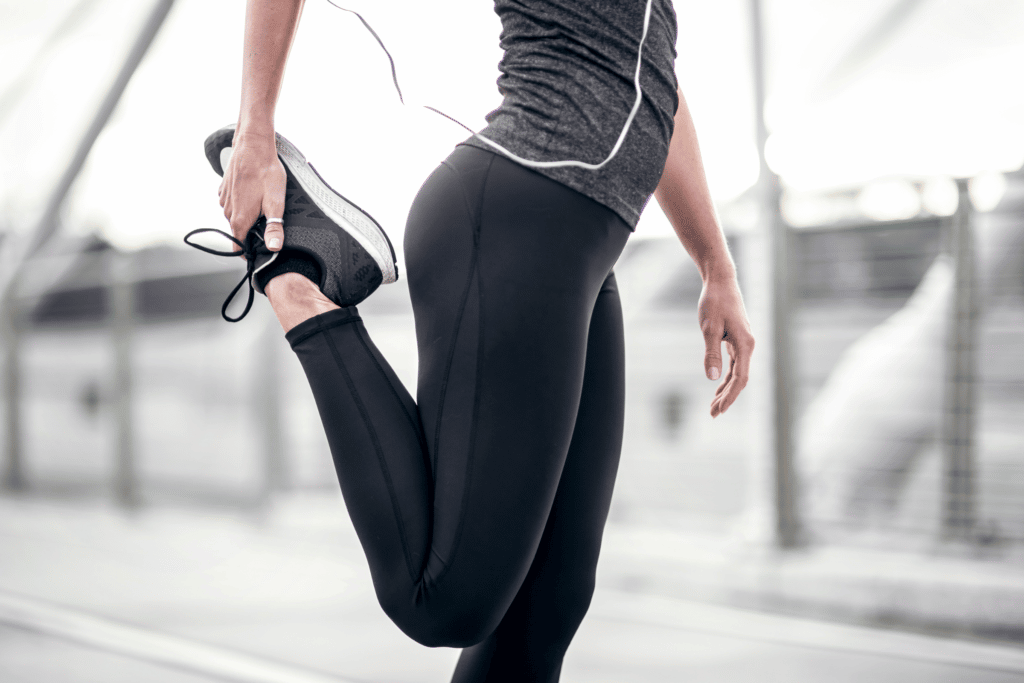
Check the UV Index
Different times of day can mean different degrees of UV rays coming from the sun. Being educated and informed on when risk is the highest will help you make good decisions to protect your skin.
Before going for a run, check the UV index. The higher the UV index, the more mindful of the sun you should be: wear more protective clothing, reapply sunscreen more often, find shade, etc.
The National Weather Service calculates the UV index and ranges on a scale of 0 to 11. The higher the number, the greater your risk of issues from sun exposure.
Generally speaking, the UV index is the highest from 10 a.m. to 4 p.m. Avoid running at these times to avoid high UV radiation.
It’s important to note that even at a low UV index, runners can still get sunburnt; it just takes longer. By quantifying your risk, you can make better decisions and appropriately prepare for a run in the sun.
How to find the best sunscreen for runners
Sunscreen is the one-size-fits-all solution to sun protection. While it can be tedious to reapply and you may feel disgusting, rest assured that proper sunblock use will save you a lot of trouble down the road.
Finding sunscreen to use as a runner is different than finding sunscreen for everyday use; our needs are slightly more specific.
Three of the best sunscreens for runners are:
- Neutrogena UltraSheer Dry-Touch
- Banana Boat Ultra Sport Sunscreen
- Babo Botanicals Zinc Sunscreen
Before diving into each of these individually, we need to discuss exactly what we, as runners, should look for in sunscreen.
Most important in a good sunscreen for running is a high SPF rating. SPF stands for sun protection factor, so the higher the SPF, the more protection runners get from the sun. A good baseline to shoot for would be sunscreens with SPF 50.
Next is broad spectrum protection. Sunscreens that are labeled as “broad spectrum sunscreens” are superior to those that are not. Broad spectrum protection means that a sunscreen provides protection from both UVA and UVB rays, the two types of UV that come from the sun. If UVA is left unprotected, your risk for melanoma skyrockets.
Lastly, opt for sweat-resistant sunscreen. As runners, we sweat. A lot. Sweat-resistant sunscreen is great because it will last longer without reapplication! It’s also less likely to drip into your eyes. Take it from me – not a fun experience.
Neutrogena UltraSheer Dry-Touch
Neutrogena provides affordable yet effective sunscreen. The UltraSheer Dry-Touch is our first recommendation for a great running sunscreen.
Neutrogena UltraSheer Dry-Touch is a chemical-based sunscreen with a 55 SPF rating, broad spectrum protection, water-resistant, and sells at an affordable price of $8.
This sunscreen has a rating of 55 SPF, meaning it will block an estimated 98% of the sun’s UV rays. Make sure to apply a thick layer for full protection.
It’s formulated with what Neutrogena’s proprietary complex Helioplex, composed of Avobenzone and Oxybenzone. Together, these provide strong, long-lasting protection against the sun.
The Dry-Touch component of this sunscreen is a big feature: once rubbed in, this sunscreen doesn’t have the greasy feel that most sunscreens do. It’s light on your skin and dry to the touch.
You can pick up Neutrogena UltraSheer Dry-Touch on Amazon for $8.
Banana Boat Ultra Sport Sunscreen
Banana Boat is a highly-regarded sunscreen producer and their sports sunscreen holds up that reputation.
Banana Boat Ultra Sport Sunscreen provides superior endurance against sweaty athletes, broad spectrum protection, and a high SPF rating that will keep you protected from the sun.
Ultra Sport Sunscreen has an SPF rating of 50, similar to that of many sports sunscreens. It will protect you from harsh rays when applied properly.
It also emphasizes sweat resistance, which is a key feature in sunscreen for runners. This means reapplying less often, although you should still err on the side of caution.
Ultra Sport Sunscreen offers broad spectrum protection from both UVA and UVB rays, leaving no bases uncovered.
What’s special about Banana Boat Ultra Sport Sunscreen is its absence of oxybenzone. Oxybenzone has been found to be absorbed into the bloodstream, which can have potentially harmful effects. Because it is absent in this formulation, no need to worry!
You can purchase Banana Boat Ultra Sport Sunscreen on Amazon for $10.
Babo Botanicals Zinc Sunscreen
For all my sensitive-skinned runners out there, this is the one for you!
Babo Botanicals Zinc Sunscreen provides sensitive skin with a strong barrier against UV rays, broad spectrum protection, and high-quality ingredients when compared to other performance sunscreens.
Babo Botanicals Zinc Sunscreen is a vegan formulation, zinc being the main active ingredient. If you’re concerned about the potentially harmful ingredients in chemical sunscreen, rest assured that Babo Botanicals is completely mineral-based.
This sunscreen has an SPF of 30; lower than others but plenty sufficient if reapplied liberally. It also provides broad spectrum protection, a key component in performance sunscreen.
Babo Botanicals is unique in that its formulation is hypoallergenic! Their sunscreen is created with sensitive skin in mind, so applying and reapplying their sunscreen is gentle on the skin.
While the price tag may be a bit higher than chemical-based sunscreens at $14 on Amazon, it very well may be worth the cost.

